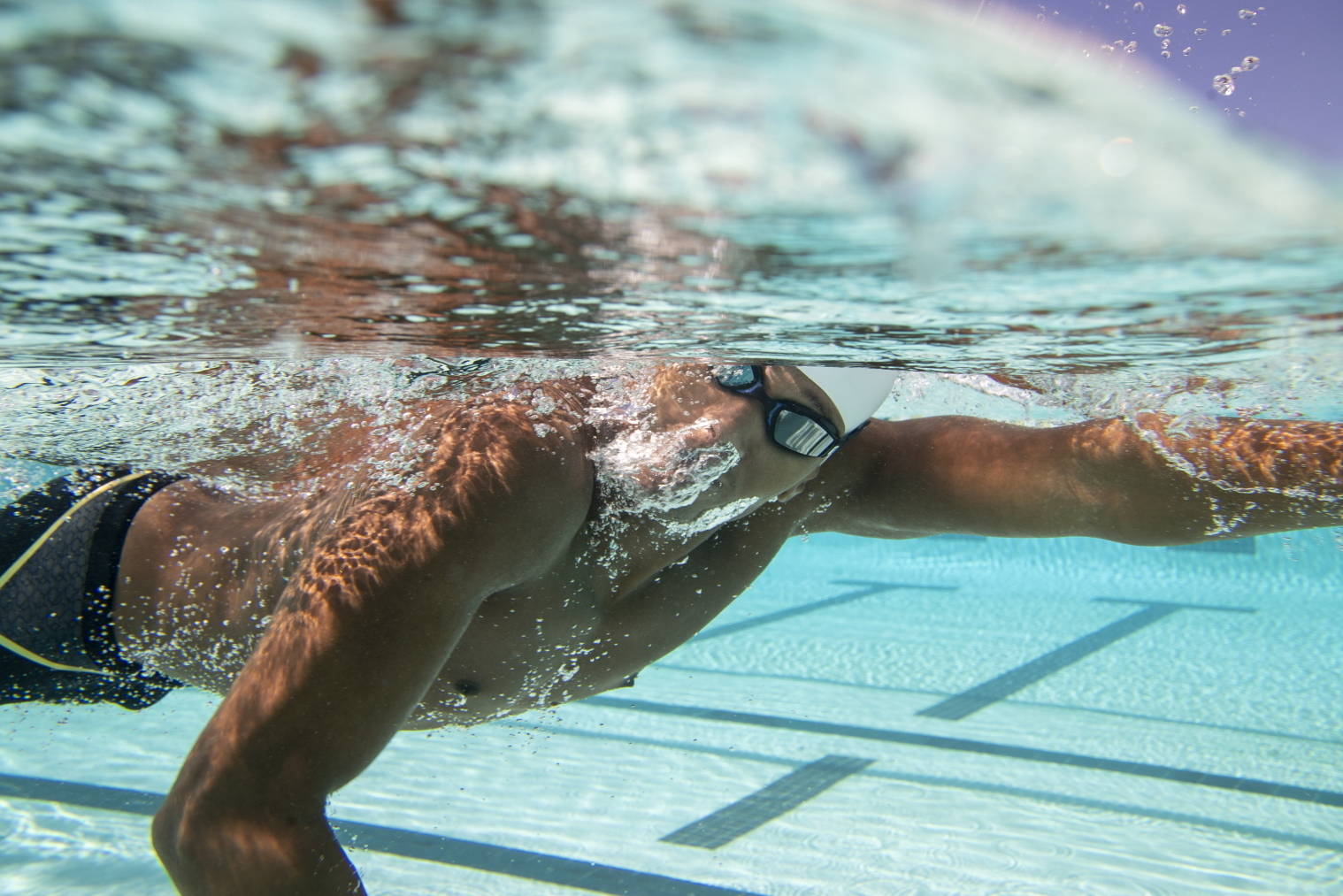Für viele Schwimmer stellt sich vor allem zu Beginn die Frage: Wie und wann atme ich eigentlich? Wir üben die einfachste Sache der Welt, die im Wasser gar nicht so simpel ist.
Ganz einfach gesagt gilt für das Atmen im Schwimmen: Über Wasser einatmen und unter Wasser ausatmen. Das klingt nicht gerade überraschend. Aber achtet einmal darauf, ob ihr unter Wasser wirklich gut ausatmet, wann ihr atmet und wie viel.
Atmung ist "Kopfsache" - es ist genügend Luft vorhanden
Wir haben rund fünf Liter Lungenvolumen, bei jedem Atemzug atmen wir circa einen dreiviertel Liter ein und wieder aus. Der Rest der Luft bleibt in der Lunge. Wenn man schwimmt, dann reicht es aus, wenn man genauso tief atmet wie an Land.
So funktioniert's
Wenn am Ende der Druckphase die Hand das Wasser verlässt und wieder nach vorn geführt wird, rotiert der Schultergürtel leicht auf und der Kopf dreht sich seitlich mit. Diese leichte Drehung reicht für die Atmung schon aus. Eingeatmet wird vorrangig durch den Mund. Tipp: Vermeide unbedingt den Kopf nach vorn hochzuheben! Deine Beine sinken hinten sofort ab. Schaue zur Seite - suche dir hier zum Beispiel Bezugspunkte am Beckenrand.
Wenn der Arm dann vorn wieder ins Wasser eintaucht, atmest du aktiv durch Mund und Nase aus. Tipp: Je länger der Zug ist, desto besser die Gleitphase, desto mehr Zeit kann man sich beim Atmen lassen. Das bringt viel Ruhe in das Schwimmen, das Gleiten ist angenehm und entspannend und das Atmen wird nicht hektisch.
Zugehörige Kategorien
Übung macht den Meister
Die zentrale Übung für das Atmen ist Beinschlag auf der Seite (findet ihr in > diesem Beitrag). Es ist für uns sehr ungewohnt horizontal zu liegen und beim Atmen die Welt horizontal zu sehen. Wenn wir uns daran gewöhnt haben und die Übung gut funktioniert, dann ist das Atmen beim Schwimmen ein Kinderspiel.
Ich empfehle, immer die ersten Meter der Bahn ohne Atmung zu beginnen und sich erst einmal auf die Technik zu konzentrieren. Dann kann man zum Atmen die Übung Beinschlag auf der Seite einbauen und in aller Ruhe erst einmal Luft holen. Denn es ist wichtig, dass man beim Atmen den Körper nur um die Längsachse dreht. Eine gute Übung ist daher auch drei bis fünf Züge Kraul- und im Anschluss drei bis fünf Züge Rückenschwimmen. Der Fokus liegt dabei in der Drehung um die Körperlängsachse.
Das Training der Woche
300 m locker einschwimmen, verschiedene Lagen
200 m Brust 2 Züge normal und 2 Züge tauchen im Wechsel
100 m locker Rücken (hier ist das Atmen ganz einfach)
300 m 2 x 2er Zug und 3 x 3er Zug (Diese Übung dient der Koordination.)
(2 x rechts atmen, dann 3 x abwechselnd beim 3er Zug und dann 2 x links)
100 m locker Brust oder Rücken
50 m 5er Zug
50 m 4er Zug
50 m 3er Zug
50 m 2er Zug
8 x 100m 100 ruhig und 100 m schnell im Wechsel (Pause 20 sek)




















